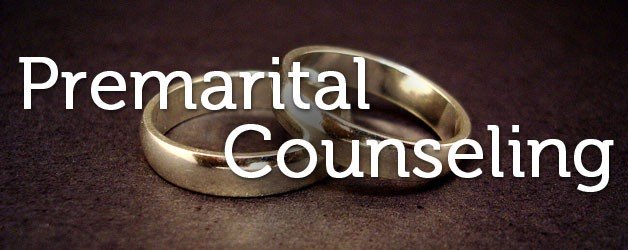Relationships can be the most fulfilling parts of our lives, but they can also be the most painful when unhealthy dynamics take root. Many people find themselves stuck in cycles of arguments, mistrust, or emotional withdrawal without understanding why. These toxic patterns don’t always start big; often, they creep in quietly, hidden behind stress, insecurity, or poor communication. Over time, though, they erode trust, intimacy, and joy.
The hard truth? Love alone isn’t enough to fix toxic cycles. Awareness, tools, and accountability are needed to break free—and that’s where relationship coaching comes in. By providing structure, perspective, and actionable strategies, coaching helps couples recognize harmful patterns, replace them with healthier habits, and build stronger, more loving bonds.
In this article, we’ll explore the most common toxic patterns, why people get trapped in them, and how coaching can be the key to lasting change.
What Do We Mean by “Toxic Patterns”?
Not all disagreements or frustrations are toxic. Healthy couples argue, disagree, and sometimes disappoint each other. Toxic patterns are different because they repeat and damage trust, respect, or emotional safety.
Some common examples include:
- Constant criticism – focusing on flaws instead of appreciating strengths.
- Stonewalling – shutting down or refusing to engage in important conversations.
- Control and manipulation – one partner dominating decisions or guilt-tripping the other.
- Blame cycles – refusing to take responsibility, leading to repetitive fights.
- Silent resentment – unresolved feelings building up and exploding later.
These cycles become toxic because they are self-reinforcing. Once the pattern starts, each argument or cold silence makes the next one more likely.
Why Do Couples Get Trapped in Toxic Patterns?
Toxic behaviors often develop gradually. They are rarely intentional but stem from deeper issues such as:
- Unhealed wounds from past relationships.
- Unrealistic expectations about love and romance.
- Stress from external pressures like finances, work, or family.
- Fear of vulnerability or rejection.
- Poor communication skills learned in childhood or early relationships.
Without intervention, these patterns can escalate, leaving both partners feeling stuck, unheard, and unloved. According to Verywell Mind, toxic relationships drain energy, create insecurity, and make people question their self-worth. Coaching interrupts this cycle before it becomes destructive.
How Coaching Helps Break Toxic Cycles
A relationship coach acts as both a guide and a mirror. Instead of simply telling partners what’s “wrong,” coaches highlight hidden dynamics and teach strategies to change them. Here’s how:
- Awareness Building: Helping couples identify the toxic behaviors they’ve normalized.
- Communication Skills: Teaching active listening, “I feel” statements, and conflict de-escalation.
- Boundary Setting: Clarifying what’s acceptable and what isn’t in a healthy relationship.
- Accountability: Ensuring both partners commit to change instead of blaming one another.
- Healing Exercises: Encouraging forgiveness, empathy, and rebuilding trust step by step.
The beauty of coaching lies in its action-oriented approach. Rather than just talking about the problem, couples learn how to shift behavior in real time.
Comparing Relationships: Toxic vs. Healthy
To see how coaching makes a difference, let’s compare toxic cycles to healthy relationship habits.
| Toxic Pattern | Impact on Relationship | Healthy Alternative (Through Coaching) |
|---|---|---|
| Constant criticism | Low self-esteem, resentment | Appreciation, constructive feedback |
| Stonewalling | Emotional distance, unresolved issues | Open dialogue with timeouts for cooling down |
| Control and manipulation | Loss of trust, partner feels trapped | Shared decision-making, respect for autonomy |
| Blame cycles | Endless arguments without resolution | Accountability, problem-solving together |
| Silent resentment | Explosive fights after bottled-up emotions | Regular check-ins and honest conversations |
This table highlights the transformation coaching can bring—turning destructive habits into constructive practices.
The Role of Self-Awareness in Breaking Patterns
Awareness is the turning point in every transformation. You cannot change what you cannot see. In relationships, toxic patterns often thrive because they operate in the shadows—partners repeat behaviors without realizing the damage they cause. Awareness shines a light on these cycles, making them visible, understandable, and, most importantly, changeable.
Why Awareness Is Often Missing
Most people don’t set out to sabotage their relationships. Toxic dynamics usually come from unconscious habits shaped by past experiences, upbringing, or unresolved emotions. Without awareness, these behaviors feel “normal.”
For example:
- Someone raised in a critical household may grow up believing constant critique is a form of love.
- A partner who experienced abandonment may cling tightly, thinking it shows commitment, not realizing it feels suffocating.
- A person accustomed to silence during conflict may withdraw, assuming avoidance prevents harm, but in reality, it creates distance.
In each case, the intention isn’t toxic—but the impact is. Without awareness, couples misinterpret each other’s actions, fueling conflict instead of connection.
How Coaching Builds Awareness
A relationship coach acts as a mirror. By observing interactions and asking targeted questions, they reveal patterns that partners are too close to see themselves. Awareness in coaching often comes in two powerful forms:
- Behavioral Awareness
- Recognizing recurring toxic actions like blame, manipulation, or stonewalling.
- Identifying “trigger points” that spark conflict.
- Understanding how personal stress spills into the relationship.
- Emotional Awareness
- Learning to name and express feelings instead of acting them out through toxic behaviors.
- Recognizing the difference between fear, anger, sadness, and insecurity.
- Becoming attuned to how one’s emotions impact the partner.
Through awareness exercises, couples start noticing patterns in real time. They realize, “I criticize when I feel anxious,” or “I shut down when I’m afraid of rejection.” This recognition creates space to choose a healthier response.
Awareness Turns Reactivity Into Choice
Toxic patterns thrive on reactivity—acting without thinking, often fueled by strong emotions. Awareness interrupts that automatic cycle. When partners become aware of their triggers, they can pause before reacting.
- Instead of lashing out in anger, one partner may say, “I’m feeling overwhelmed right now; let’s talk later.”
- Instead of withdrawing, another might say, “I need a few minutes, but I want to resolve this with you.”
This simple pause transforms arguments. What was once an uncontrollable spiral becomes a conscious choice.
Awareness Brings Compassion
Awareness is not only about noticing your own patterns; it’s also about seeing your partner’s struggles with compassion. When couples understand why a behavior happens, they stop assuming the worst.
- A partner who stonewalls isn’t always being cold—they may fear saying the wrong thing.
- A partner who criticizes may not mean harm—they might be expressing insecurity.
Coaching fosters this mutual awareness, which softens judgment and opens space for empathy. Instead of attacking, couples begin to support each other in breaking free from old cycles.
From Awareness to Action
Awareness alone isn’t enough—it’s the foundation for change. Once couples recognize their toxic cycles, coaching helps them take the next steps:
- Replace criticism with appreciation.
- Transform blame into accountability.
- Shift withdrawal into open dialogue.
- Turn manipulation into honest requests.
Every new choice begins with awareness. It’s like turning on a light in a dark room—you can finally see what needs rearranging.
Why Awareness Is Empowering
Far from being overwhelming, awareness is liberating. Couples often feel relief when they realize, “We’re not broken—we’re just repeating patterns we can change.”
Awareness empowers couples to:
- Take ownership of their actions.
- Recognize progress, no matter how small.
- Stop seeing each other as enemies and start seeing themselves as teammates against the toxic cycle.
The Lasting Impact of Awareness
When awareness becomes part of a relationship, it changes everything. Couples begin catching themselves mid-pattern and course-correcting before real harm is done. Over time, this builds trust, safety, and intimacy.
More importantly, the skills of awareness extend beyond the relationship. Individuals carry this self-knowledge into friendships, family dynamics, and even professional life. They become better communicators, more empathetic listeners, and more resilient people.
In short, awareness is the first and most essential step in breaking toxic patterns. Without it, cycles repeat endlessly. With it, couples gain the clarity and courage to rewrite their story—together.
Coaching increases self-awareness so partners understand not only what they do but why they do it. This makes it easier to catch themselves before repeating the cycle.
How Coaching Restores Communication
At the heart of most toxic patterns is broken communication. Couples either don’t talk enough, or when they do, the conversations escalate into fights. Coaches reintroduce healthy communication by teaching:
- Active Listening – giving full attention without interrupting.
- Empathy Statements – validating feelings, even when you disagree.
- Conflict Blueprints – structured approaches to resolve arguments quickly.
- Non-Verbal Awareness – paying attention to tone, facial expressions, and body language.
When communication improves, toxic patterns like blame or stonewalling lose their power.
Coaching Builds Emotional Safety
One of the most overlooked aspects of toxic dynamics is the lack of emotional safety. Partners stop sharing their real thoughts for fear of judgment, rejection, or escalation. Coaching creates a safe space where vulnerability becomes possible again.
For example, instead of saying:
- “You never care about me,” a partner learns to say,
- “I feel neglected when we don’t spend time together.”
This subtle shift reduces defensiveness and opens the door to intimacy.
The Long-Term Benefits of Breaking Toxic Patterns
Breaking free from toxic cycles doesn’t just save relationships—it transforms them. Coaching provides long-lasting benefits, including:
- Stronger trust – as partners consistently show reliability and respect.
- Deeper intimacy – as vulnerability replaces fear.
- Resilience – couples handle future conflicts with maturity instead of destruction.
- Individual growth – each partner becomes healthier, even outside the relationship.
Couples who embrace coaching often find that their love not only survives but becomes richer and more fulfilling. In fact, research suggests that guided coaching interventions improve both relationship satisfaction and long-term well-being (Positive Psychology).
Final Thoughts: From Toxic to Thriving
Toxic patterns don’t mean your relationship is doomed. They mean your relationship needs attention, growth, and new strategies. Coaching helps you recognize destructive cycles, replace them with healthier habits, and create the emotional safety needed for love to flourish.
Love isn’t about never making mistakes—it’s about learning, adjusting, and growing together. With the right coaching, even the most toxic cycles can be broken, leaving room for trust, intimacy, and lasting joy.
So, if you find yourself stuck in arguments, silence, or resentment, ask yourself: What would change if we stopped repeating the same patterns? The answer may be the beginning of a healthier, happier relationship.





